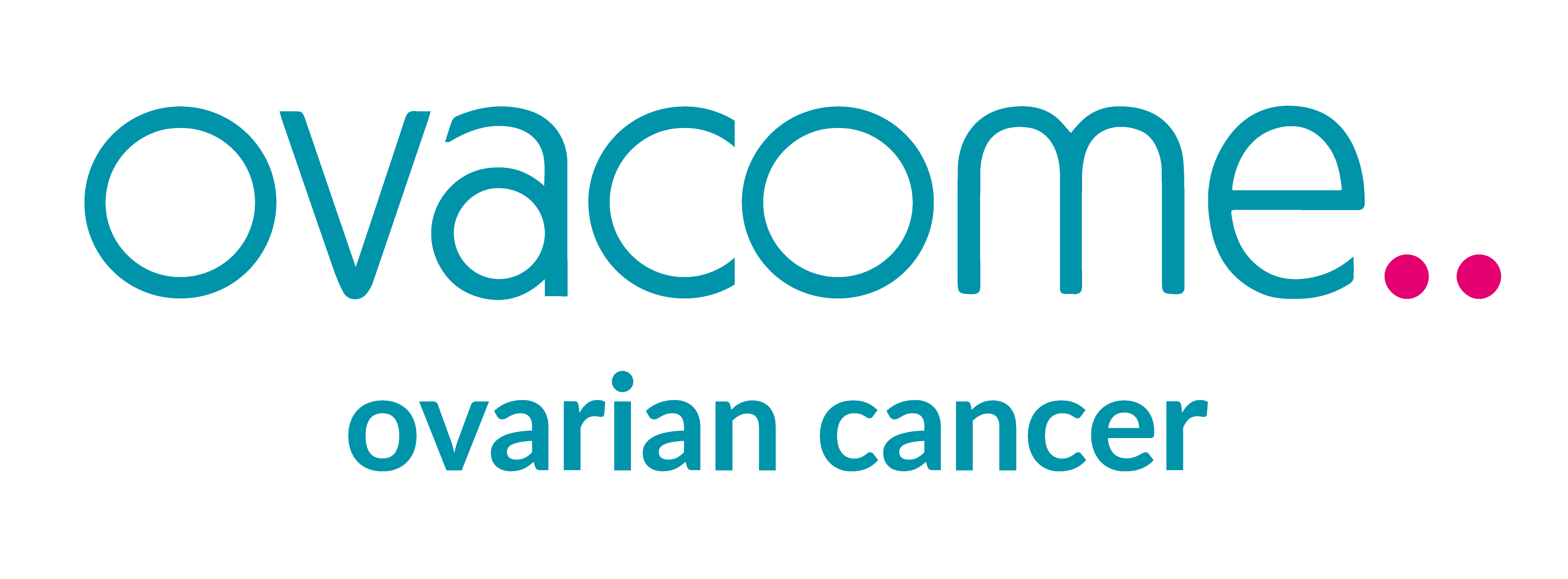About the ovaries
What are the ovaries?
The ovaries form part of the female reproductive system. The ovaries are oval-shaped and around four centimetres long (roughly the size of an almond). The two ovaries sit either side of the uterus, supported by ligaments and the blood supply which comes from the side of the pelvis. The fallopian tubes run along the side of the ovaries into the uterus.
- A woman who was assigned female at birth (recorded as female on her birth certificate).
- A transgender man or non-binary person who was assigned female at birth.
- An intersex person.
- A man who has a difference in sex development (DSD).

Speak to our support line.
Do you have questions about ovarian cancer or your diagnosis?
Our support line is here:
Monday - Friday 10am-5pm.
Call 0808 008 7054 or email support@ovacome.org.uk

What do the ovaries do?
Ovarian cysts
Ovarian cysts are fluid-filled sacs which develop in the ovaries and are very common before the menopause. They are usually diagnosed by an ultrasound scan and sometimes also by blood tests. Symptoms can include those associated with ovarian cancer which we list here.
If an ovarian cyst is not causing any problems, the cyst may be monitored for changes depending on its size, but otherwise not treated. Sometimes hormonal contraceptives are prescribed to stop cysts recurring. If the cyst is large, causing symptoms, or if there is a suspicion the cyst is cancerous, then it may be removed by surgery. Up to one in ten people may need surgery for an ovarian cyst at some time in their life.
There are two main types of ovarian cysts: functional and pathological.
Functional ovarian cysts
These include cysts which are linked to the menstrual cycle such as follicular cysts, corpus luteum cysts and haemorrhagic cysts. They are not cancerous and will usually resolve on their own within two or three menstrual cycles.
.PpThese are abnormal growths and can develop before or after the menopause. They include endometriomas, dermoid cysts (teratomas), and cystadenomas. Most of these cysts will not be cancerous. Pathological cysts can sometimes burst or grow very large; a small number will be cancerous. In these circumstances the cyst, possibly the whole ovary, will probably need to be surgically removed.
If you are post-menopausal, the recommendation is that a risk of malignancy index (RMI) should be completed by your doctor or specialist to guide the management of the ovarian cysts. This will help identify your risk of ovarian cancer and whether you should be treated by a general gynaecologist or by cancer services. It uses a blood test to check for ovarian cancer called CA125 and the appearances at ultrasound scan to provide a combined score or likelihood that any cyst is cancerous.
Polycystic ovary syndrome (PCOS)
Some people have a condition call Polycystic Ovary Syndrome (PCOS). This is very common; it is estimated that 1 in 10 women have PCOS.
(PCOS) is different to ovarian cysts. You are not at higher risk of ovarian cancer if you have PCOS, but your risk of endometrial cancer is slightly increased. Verity is the UK PCOS self-help organisation, you can view their website here.
Further information
NHS information on ovarian cysts
Royal College of Obstetricians and Gynaecologists patient information on ovarian cysts before the menopause
Royal College of Obstetricians and Gynaecologists guidance on ovarian cysts in post menopausal women
Royal College of Obstetricians and Gynaecologists guidance on ovarian masses in premenopausal women
Polycystic ovary syndrome (PCOS) is different to ovarian cysts. You are not at higher risk of ovarian cancer if you have PCOS, but your risk of endometrial cancer is slightly increased. Verity is the UK PCOS self-help organisation, you can view their website here.

Did you find this page helpful?
We welcome your feedback. If you have any comments or suggestions, please email r.grigg@ovacome.org.uk or call 0207 299 6653.
Get support
Ovacome is the UK 's national ovarian cancer support charity. We've been providing emotional support and personalised, expert information since 1996. Contact our support line by phone, email or text if you have questions about a diagnosis, or if you just want to talk things through.
We support anyone affected by ovarian cancer, including family members, carers, those with an inherited risk, and health professionals working in the field.
Ovacome has 50 information booklets on a variety of topics about ovarian cancer.
Become part of the Ovacome community
Our members are at the heart of everything we do. There’s no cost to membership. Be the first to hear about Ovacome news and join a friendly, supportive community, all working together to promote knowledge and support others.






